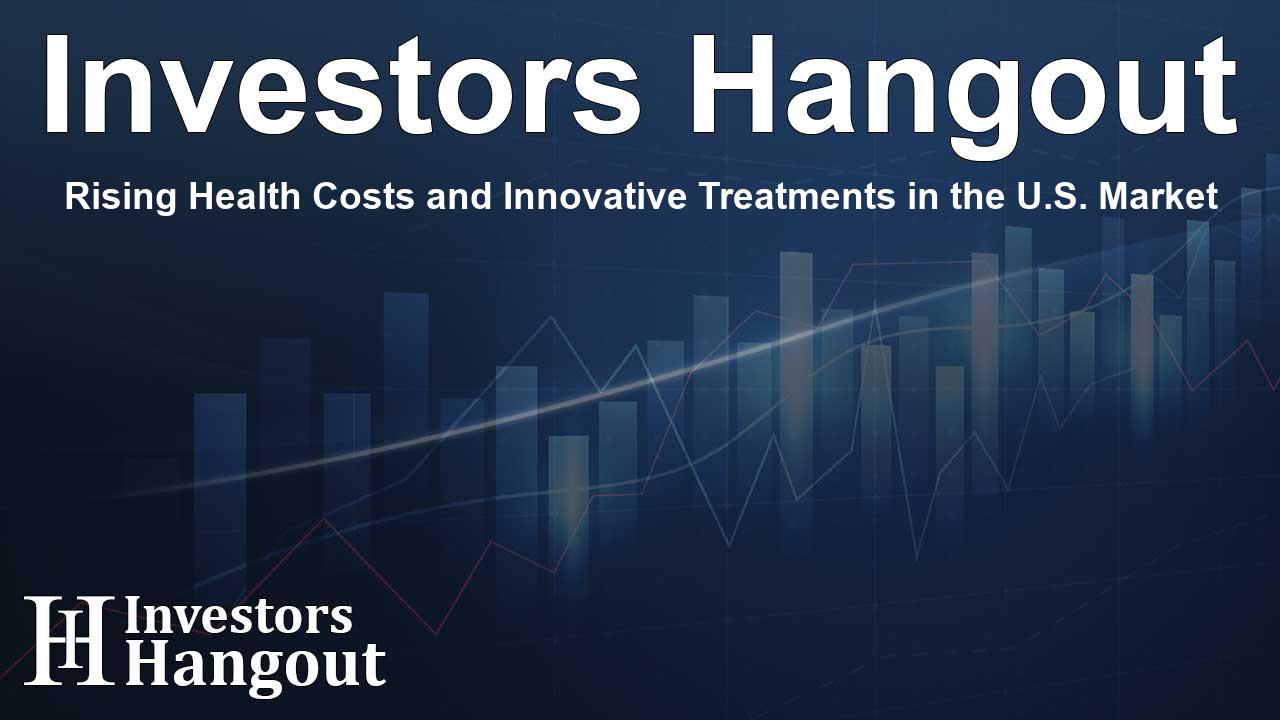Rising Health Costs and Innovative Treatments in the U.S. Market

Rising Costs of U.S. Employee Healthcare and Innovations
In the landscape of obesity treatment, Eli Lilly and Co. (NYSE: LLY) is making significant waves with its revolutionary drug, Zepbound (tirzepatide). This medication poses serious competition to Novo Nordisk A/S (NYSE: NVO) and its renowned Wegovy (semaglutide), as both drugs vie for market dominance in an evolving industry.
Transforming the Obesity Treatment Market
According to recent analyses, Zepbound is positioned to potentially surpass Wegovy due to its effectiveness and strategic growth strategies. As reported by GlobalData, Zepbound's entry and subsequent performance establish it as a serious contender for the top spot in obesity therapies.
Since its initial launch, Zepbound's application has broadened significantly. Recently, health authorities approved it for the treatment of obstructive sleep apnea, exploring even more potential benefits in managing cardiovascular risks and other serious conditions like chronic kidney disease.
Expanding Therapeutic Horizons
The healthcare community is interested in how Zepbound could influence treatment strategies across multiple therapeutic areas. GlobalData's Pharma Analyst, Costanza Alciati, notes that Eli Lilly is pursuing multiple routes similar to those of Novo Nordisk, which could enhance Zepbound's market potential.
Wegovy remains a hallmark in obesity management, spurring substantial investments within the sector. Its influence has inspired over 400 companies to develop new therapies. Approved also for other health concerns like type 2 diabetes, Wegovy's success has prompted further research into treatment avenues for additional chronic diseases.
Zepbound's Competitive Edge
Despite Wegovy's achievements, analysts believe Zepbound's greater potency presents a stronger, cost-effective solution for patients. This promising performance is reshaping the dynamics of the obesity drug market, fundamentally altering how these treatments are perceived by consumers and healthcare professionals alike.
Significant Surge in Healthcare Costs
As the competition in the obesity treatment arena heats up, the broader implications for healthcare costs in the U.S. cannot be ignored. A recent report from Aon plc (NYSE: AON) forecasts a staggering 9% increase in employer-sponsored healthcare costs for 2025, projected to surpass $16,000 per employee. This increase represents a sharp escalation from earlier years, reflecting broader trends in healthcare expenditures.
This notable rise is driven primarily by factors like higher medical claims, escalating costs of prescription medications, and adjustments necessitated by inflation. Incidentally, GLP-1 therapies, which include popular weight-loss medications like tirzepatide and semaglutide, are among the significant factors influencing these healthcare costs.
Financial Burdens on Employers
Employers are grappling with burdensome financial responsibilities, as they cover an average of 81% of health plan expenses. This translates to employee contributions totaling nearly $4,858 annually, which includes premiums and out-of-pocket costs. It’s clear that as innovative treatments emerge, they yield both opportunities and hurdles.
Industry Impact and Adaptation
Insights reveal that the technology and communications sectors face the highest healthcare cost increases. In terms of employer contributions, the public sector sees the most significant contribution rise, while the healthcare sector remains relatively stable.
In 2024, employer healthcare budgets increased by 6.4%, alongside a modest 3.4% hike in employee premiums. Despite its modest uptake, the financial impact of therapies like Zepbound and Wegovy signifies how emergent treatments can sway healthcare spending.
High-cost claims associated with advanced therapies, complex medical procedures, and chronic health issues are further straining employer budgets, heightening the urgency for cost-effective solutions.
Current Market Movement
In the midst of these developments, LLY stock witnessed a rise of 0.88%, trading at $778.79 during early market hours. Such market reactions exemplify how investor sentiment is closely tied to health market innovations.
Frequently Asked Questions
What is Zepbound and how does it compare to Wegovy?
Zepbound, produced by Eli Lilly, is a medication for obesity that competes directly with Wegovy from Novo Nordisk, showing promising results in effectiveness and market potential.
Why are healthcare costs rising in the U.S.?
Healthcare costs are increasing due to higher medical claims, increased prescription drug prices, inflation adjustments, and the costs associated with advanced therapies.
What percentage of healthcare costs do employers cover?
On average, U.S. employers cover about 81% of health plan costs for their employees.
How does Zepbound impact employer healthcare budgets?
Zepbound's introduction, like other GLP-1 medications, is contributing to rising healthcare costs for employers, potentially adding 1% to overall cost increases.
What are the projected employer healthcare costs for 2025?
Employer-sponsored healthcare costs are projected to increase by 9% for 2025, exceeding $16,000 per employee, according to reports by Aon plc.
About The Author
Contact Dominic Sanders privately here. Or send an email with ATTN: Dominic Sanders as the subject to contact@investorshangout.com.
About Investors Hangout
Investors Hangout is a leading online stock forum for financial discussion and learning, offering a wide range of free tools and resources. It draws in traders of all levels, who exchange market knowledge, investigate trading tactics, and keep an eye on industry developments in real time. Featuring financial articles, stock message boards, quotes, charts, company profiles, and live news updates. Through cooperative learning and a wealth of informational resources, it helps users from novices creating their first portfolios to experts honing their techniques. Join Investors Hangout today: https://investorshangout.com/
The content of this article is based on factual, publicly available information and does not represent legal, financial, or investment advice. Investors Hangout does not offer financial advice, and the author is not a licensed financial advisor. Consult a qualified advisor before making any financial or investment decisions based on this article. This article should not be considered advice to purchase, sell, or hold any securities or other investments. If any of the material provided here is inaccurate, please contact us for corrections.
